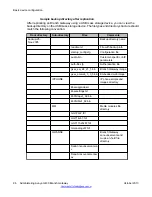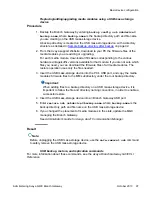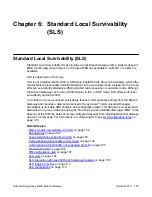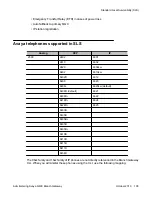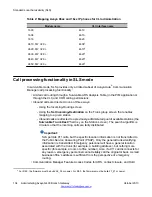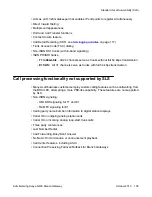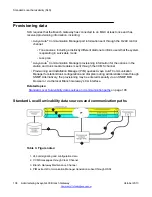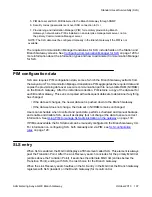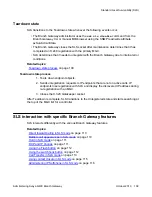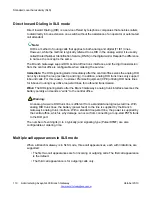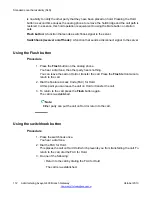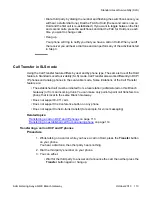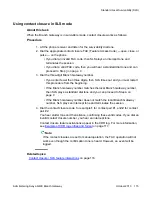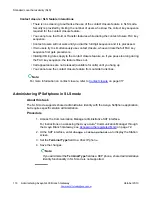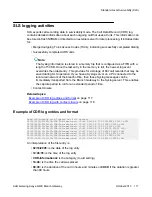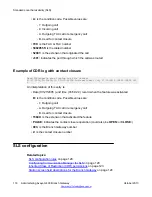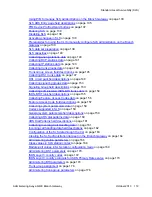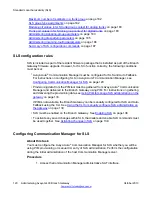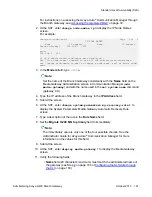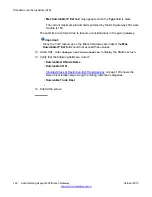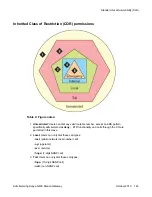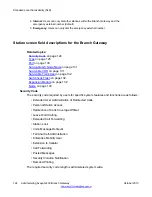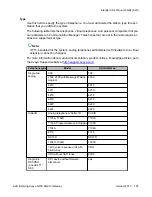
Direct Inward Dialing in SLS mode
Direct Inward Dialing (DID) is a service offered by telephone companies that enables callers
to dial directly into an extension on a switch without the assistance of an operator or automated
call attendant.
Note:
DID is a method of routing calls that applies to both analog and digital (T1/E1) lines.
However, while the method is typically referred to as DID in the analog world, it is usually
called Dialed Number Identification Service (DNIS) in the digital world. Despite the difference
in names, the concept is the same.
The Branch Gateways support DID central office trunk interfaces, and the digit transmission
from the central office is configurable when ordering the service:
Immediate:
The DID signaling starts immediately after the central office seizes the analog DID
trunk by closing the loop (across tip and ring). In addition, analog DID trunk lines only support
inbound calls. For this reason, Customer Premise Equipment (CPE) utilizing DID trunk lines
for inbound routing may utilize loop-start lines for outbound transmission.
Wink:
The DID signaling starts after the Branch Gateway’s analog trunk interface reverses the
battery polarity and sends a “wink” to the central office.
Warning:
An analog two-wire DID trunk line is different from a standard analog loop-start line. With
analog DID trunk lines, the battery (power feed) to the line is supplied by the Branch
Gateway’s analog trunk interface. With a standard loop-start line, the power is supplied by
the central office, which is why damage can occur from connecting a loop-start PSTN trunk
to the DID port.
The number of sent digits (3 to 4 typically) and signaling type (Pulse/DTMF) are also
configurable at ordering time.
Multiple call appearances in SLS mode
When a Branch Gateway is in SLS mode, three call appearances, each with limitations, are
supported:
• The first two call appearances are for incoming or outgoing calls. The first call appearance
is the default.
• The third call appearance is for outgoing calls only.
Standard Local Survivability (SLS)
110 Administering Avaya G430 Branch Gateway
October 2013
Summary of Contents for G430
Page 1: ...Administering Avaya G430 Branch Gateway Release 6 3 03 603228 Issue 5 October 2013 ...
Page 12: ...12 Administering Avaya G430 Branch Gateway October 2013 ...
Page 246: ...VoIP QoS 246 Administering Avaya G430 Branch Gateway October 2013 Comments infodev avaya com ...
Page 556: ...IPSec VPN 556 Administering Avaya G430 Branch Gateway October 2013 Comments infodev avaya com ...

